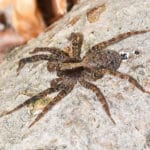Ever heard of a spider nicknamed the “South Russian Tarantula”? A name like that conjures images of a large, hairy, and frankly, terrifying creature. But what if the truth is far more nuanced, far more fascinating, than the myth? Journey with us into the world of Lycosa singoriensis, a remarkable arachnid shrouded in misconception.
The Wolf in Spider’s Clothing
Our story begins on the windswept steppes of Eurasia, home to Lycosa singoriensis. Reaching lengths up to 4 centimeters, this imposing spider certainly looks the part of a tarantula. But appearances can be deceiving. Lycosa singoriensis isn’t a tarantula at all; it’s a wolf spider – the largest in Central Europe, in fact. This crucial distinction reveals a unique set of behaviors and ecological roles that set it apart. [https://www.lolaapp.com/maine-anjou-bulls]
Debunking the Tarantula Myth
The misnomer “South Russian Tarantula,” while common, stems from a superficial resemblance to true tarantulas (family Theraphosidae). Our subject, however, belongs to the Lycosidae family – the wolf spiders. This difference isn’t just taxonomic nitpicking; it’s key to understanding the spider’s life.
A Portrait of the South Russian “Tarantula”
Imagine a spider cloaked in the subtle hues of the earth itself—greyish-black, with a thin, lighter stripe bisecting its cephalothorax. Delicate black markings radiate outwards, enhancing its camouflage in the grasslands. This cryptic coloration is a crucial asset for a stealthy hunter.
A Home on the Eurasian Steppes
Lycosa singoriensis makes its home in the grasslands and steppes of Central and Eastern Europe, stretching into parts of Asia. These vast, open landscapes, with their swaying grasses and sparse vegetation, are the perfect hunting grounds for this active predator. Sadly, while not globally assessed, localized populations likely face increasing pressure from habitat loss due to human activity. More focused research is needed to understand the full extent of these threats and to implement effective conservation measures.
Master of the Night Hunt
Unlike its web-spinning cousins, Lycosa singoriensis is a nomadic hunter. Under the cover of darkness, it emerges from its burrow, relying on keen eyesight and remarkable speed to ambush its prey. Insects and other small invertebrates that stray into its path become targets of its pursuit. With powerful venom, it swiftly subdues its captured meals.
A Mother’s Devotion
While a formidable predator, Lycosa singoriensis also exhibits a surprising tenderness. Female wolf spiders are renowned for their maternal dedication. The mother carries her spiderlings on her back, a living cloak of tiny legs, until they are large enough to fend for themselves. This devoted care significantly boosts the survival rate of the young, showcasing the strong parental instincts within this species.
Venom: Fact vs. Fiction
Is Lycosa singoriensis poisonous? The short answer is no, it’s venomous. Poison is absorbed or ingested; venom is injected. While Lycosa singoriensis possesses venom potent enough to disable its prey, it poses minimal threat to humans. A bite may cause localized pain and swelling, similar to a bee sting, but serious reactions are rare. However, individual reactions can vary, so seeking medical advice if symptoms worsen is always recommended.
The Conservation Challenge
The future of Lycosa singoriensis is intertwined with the health of its grassland habitat. As human activities continue to encroach upon these vital ecosystems, the spider’s future hangs in the balance. Habitat loss, driven by agriculture and urbanization, poses a significant threat. Conservation efforts focused on preserving and restoring grasslands are essential, not just for Lycosa singoriensis, but for the entire web of life it supports. Ongoing research is crucial for developing targeted conservation strategies and ensuring its long-term survival. [https://www.lolaapp.com/maine-anjou-bulls]
Ongoing Research and Unanswered Questions
Much remains to be discovered about Lycosa singoriensis. Researchers are continually exploring its behavior, venom composition, and the intricacies of its ecological role. Some scientists are investigating potential medicinal applications of its venom, while others are focusing on the impact of climate change on its distribution and survival. This ongoing research constantly refines our understanding and reinforces the importance of continued study and conservation efforts.
The Importance of Lycosa singoriensis
Why should we care about this often-misunderstood spider? Because Lycosa singoriensis, like all creatures, plays a vital role in the delicate balance of its ecosystem. As a top invertebrate predator, it helps regulate insect populations, contributing to the health and stability of the grasslands. Its presence, or absence, can have cascading effects throughout the food web. Understanding and protecting this remarkable arachnid is a step towards preserving the biodiversity of our planet.
















